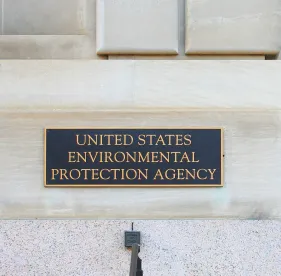On October 22, 2021, EPA published a proposed rule that would, if adopted, provide a significantly enhanced additional pathway for remediation of sites impacted by polychlorinated biphenyls or PCBs. EPA helpfully included a redline version showing proposed changes to the regulatory text. EPA is receiving comments on the proposed rule until December 21, 2021.
PCBs are a class of chemical substances that had a variety of commercial and industrial uses, and now reveal themselves as constituents of concern in a variety of remediation projects. PCBs were banned for most uses in the late 1970s through the Toxic Substances Control Act (TSCA) and as a result PCB remediation is controlled by PCB-specific federal regulations commonly known as the Mega Rule.
Under the Mega Rule, obligations with respect to historical PCB releases depend upon the medium in question and the date and concentration of release. The regulations separately address “PCB bulk product waste” (items manufactured to contain PCBs, like caulk and other building materials) and “PCB remediation waste” (like soil and other material contaminated with PCBs through a release).
The Mega Rule provides three options for disposing of PCB remediation waste. The regulations on performance-based disposal are very lean and provide off-site disposal options but not standards for PCBs remaining on site. Consequently, the common interpretation has been that essentially no PCBs can remain on-site, which limits the usefulness of this option. At present, performance-based disposal does not require any EPA involvement or notice. An intermediate option, self-implementing disposal, allows PCBs to remain on-site at or below specified concentrations, which vary depending on the use of the property, provided that the applicable regulations are followed. For self-implementing disposal, EPA must be notified of the project thirty days in advance. Finally, the most flexible (but procedurally rigorous) option is risk-based disposal, which involves approval of a risk-based cleanup plan by the relevant EPA Regional Administrator.
The October 22 proposed rule includes significant updates to the regulations on performance-based disposal, including the establishment of explicit (strict) cleanup levels. Unlike the present version of the regulations, post-remediation notice to EPA will be required. Similar to the self-implementing disposal option, the proposed performance-based standards may not be used for sites with more significant risk profiles, like private or public drinking water sources or distribution systems, and residential uses.
The proposed rule also includes other changes worthy of attention. EPA proposes to add flexibility to the regulations concerning cleanup of contemporaneous spills when those spills are caused by and managed in emergency situations like hurricane or floods. EPA also proposes to remove the italicized language from the applicability provisions of 40 CFR § 761.50(b)(3)(ii): “Any person responsible for PCB waste at as-found concentrations ≥ 50 ppm that was either placed in a land disposal facility, spilled, or otherwise released into the environment” at specified concentrations during specified timeframes must dispose of the waste in one of a few specified manners. The present language has led some to conclude that the regulations apply only when PCBs are found in the environment at concentrations at or above 50 ppm, and not otherwise. Removal of that language could cause some to rethink whether the Mega Rule should be followed at sites with PCB concentrations below 50 ppm.



 />i
/>i

